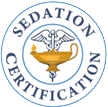New Hampshire Board of Nursing Review – 2018
Reviewed by Sedation Certification – December 23, 2023
State Sedation Policy – Yes
Can RN’s give sedation? – Yes
Can LPN’s give sedation? – No
Can RN’s give Ketamine? – Yes, under certain conditions
Can RN’s give Propofol? – No
NH Board of Nursing
Position Statement, Definitions, and Clinical Practice Advisories Regarding the Role of the RN and LPN
in the Administration of Anesthesia, Sedation, and Analgesia
Position Statement
It is the expectation of the New Hampshire Board of Nursing that administration of medications classified as anesthetics for the purpose of sedation and analgesia requires special attention. Utilizing appropriate descriptive terminology is complicated by the properties of some medications and their effects. Propofol, for example, is classified by the Food and Drug Administration as a sedative/hypnotic at lower doses, and as an anesthetic agent when given at sufficiently high doses. While the phrase “medications classified as anesthetics” is used in this document, it should be understood that classification of medications may change, and new medications may be developed. The accountability statement applies to other medications with anesthesia-inducing properties, even if not classified as anesthetics. It should also be understood that the medications might be used for other purposes, including procedural sedation and analgesia.
The licensed nurse must decline to administer medications classified as anesthetics or other medications if the nurse perceives the administration would be unsafe under the circumstances or if the medication is restricted by manufacturer guidelines, including black box warning (such as is seen with Propofol) or outside the scope of practice of the licensed nurse. The nurse should be cognizant of drugs that:
1. Have the potential for rapid, profound changes in sedative/anesthetic depth,
2. Lack of antagonist medications, and
3. Drugs that contain manufacturer’s warnings (black box) limiting administration to persons
trained in general anesthesia.
Under these circumstances patients should receive care consistent with that required for deep sedation.
As noted in the literature, sedation combined with analgesia may easily become deep sedation or loss of consciousness because of the agents used as well as the physical status and drug sensitivities of the patient. The administration of sedation requires continuous monitoring of the patient and ability to respond immediately and appropriately to any adverse reaction or complication.
Pursuant to Nur 405.01 appropriate training and competency is a requirement for any licensee performing nursing care.
Definitions
Deep sedation/analgesia—Drug-induced depression of consciousness during which patients cannot be easily aroused but respond purposefully to repeated or painful stimulation. The ability to independently maintain ventilatory function may be impaired. Patients may require assistance in maintaining a patent airway, and spontaneous ventilation may be inadequate. Cardiovascular function is usually maintained.
General anesthesia—Drug-induced loss of consciousness during which patients aren’t arousable, even by painful stimulation. The ability to independently maintain ventilatory function is commonly impaired. Patients often require assistance in maintaining a patent airway, and positive-pressure ventilation may be required because of depressed spontaneous ventilation or drug-induced depression of neuromuscular function. Cardiovascular function may be impaired.
Local Anesthesia – The pharmacological inhibition of nerve impulses in a body part. It is typically used to facilitate treatment of a small lesion or laceration or to perform minor surgery. Commonly used agents include lidocaine, bupivacaine, or novocaine.
Minimal sedation (anxiolysis)—Drug-induced state during which patients respond normally to verbal commands. Cognitive function and physical coordination may be impaired, but airway reflexes and ventilatory and cardiovascular functions aren’t affected.
Moderate sedation/analgesia —Drug-induced depression of consciousness during which patients respond purposefully to verbal commands, either alone or accompanied by light tactile stimulation. No interventions are required to maintain a patent airway, and spontaneous ventilation is adequate. Cardiovascular function is usually maintained.
Palliative sedation – Involves administering sedatives and non-opioid medications to relieve suffering in doses that may induce unconsciousness, but not death, for terminally ill, conscious patients experiencing intolerable symptoms.
Regional anesthesia – Nerve or field blocking, causing loss of sensation in a dermatome innervated by a specific nerve. Regional anesthesia includes:
Epidural anesthesia: Anesthesia produced by injection of a local anesthetic into the epidural space of the spinal cord.
Spinal: Anesthesia produced by injection of anesthetic into the subarachnoid space of the spinal cord.
Peripheral nerve block: Local anesthesia produced when a nerve is blocked with an appropriate agent
References
American Society of Anesthesiologists. (2014). Continuum of depth of sedation: Definition of general anesthesia and levels of sedation/analgesia. Retrieved from http://www.asahq.org/publicationsAndServices/sgstoc.htm
American Society of PeriAnesthesia Nurses (2017). Frequently asked questions. Retrieved from http://www.aspan.org/Clinical-Practice/FAQs#14
Arizona Board of Nursing. https://www.azbn.gov/resources/advisory-opinions/
Hospice & Palliative Nurses Association. (2016). Position Statement on Palliative Sedation. Retrieved from http://advancingexpertcare.org/wp-content/uploads/2016/01/Palliative-Sedation.pdf
Taber’s Online. (2014) Anesthesia. Retrieved from http://www.tabers.com/tabersonline/view/TabersDictionary/764983/all/anesthesia?q=general%20anesthesia#16
